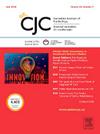The Acquisition of Cardiovascular Adaptation to Aerobic Exercise: When Does It Begin and How Does It Evolve Depending on Intrinsic and Extrinsic Factors?
IF 5.8
2区 医学
Q1 CARDIAC & CARDIOVASCULAR SYSTEMS
引用次数: 0
Abstract
The acquisition and evolution of cardiovascular (CV) adaptation to physical activity or exercise training are critical in enhancing cardiorespiratory fitness and reducing CV disease (CVD) risk. CV adaptations to exercise occur through structural, functional, and molecular changes that enhance cardiac efficiency. These adaptations, such as increased stroke volume, improved blood pressure regulation, and enhanced endothelial function, collectively reduce CVD morbidity and mortality. In this review we explore how CV adaptations vary across different demographic characteristics, and highlight the importance of exercise timing, intensity, and recovery periods. We delve into the immediate physiological responses to physical activity, such as increased heart rate and cardiac output, and the longer-term adaptations, including cardiac hypertrophy and improved vascular function. The influence of age, sex, and preexisting health conditions on CV responses to exercise is also discussed, emphasizing the need for tailored exercise interventions. Finally, the review highlights the significance of recovery periods in optimizing CV adaptations and how insufficient recovery might lead to adverse outcomes. Overall, understanding the timing and evolution of CV adaptations can inform exercise prescriptions to improve CV health across populations for the primary and secondary prevention of CVD.

心血管对有氧运动适应性的获得:它何时开始以及它是如何根据内在和外在因素进化的?
心血管(CV)适应体力活动或运动训练的获得和进化对于提高心肺适能(CRF)和降低心血管疾病(CVD)风险至关重要。心血管对运动的适应是通过结构、功能和分子变化来提高心脏效率的。这些适应,如卒中量增加、血压调节改善和内皮功能增强,共同降低了心血管疾病的发病率和死亡率。这篇综述探讨了心血管适应在不同人口统计学中的差异,强调了运动时间、强度和恢复期的重要性。它深入研究了身体活动的即时生理反应,如心率和心输出量的增加,以及长期适应,包括心脏肥大和血管功能的改善。本文还讨论了年龄、性别和既往健康状况对心血管运动反应的影响,强调了量身定制运动干预措施的必要性。最后,该综述强调了恢复期在优化心血管适应性方面的重要性,以及恢复期不足如何导致不良后果。总的来说,了解心血管适应的时间和进化可以为运动处方提供信息,以改善心血管健康,从而实现心血管疾病的一级和二级预防。
本文章由计算机程序翻译,如有差异,请以英文原文为准。
求助全文
约1分钟内获得全文
求助全文
来源期刊

Canadian Journal of Cardiology
医学-心血管系统
CiteScore
9.20
自引率
8.10%
发文量
546
审稿时长
32 days
期刊介绍:
The Canadian Journal of Cardiology (CJC) is the official journal of the Canadian Cardiovascular Society (CCS). The CJC is a vehicle for the international dissemination of new knowledge in cardiology and cardiovascular science, particularly serving as the major venue for Canadian cardiovascular medicine.
 求助内容:
求助内容: 应助结果提醒方式:
应助结果提醒方式:


